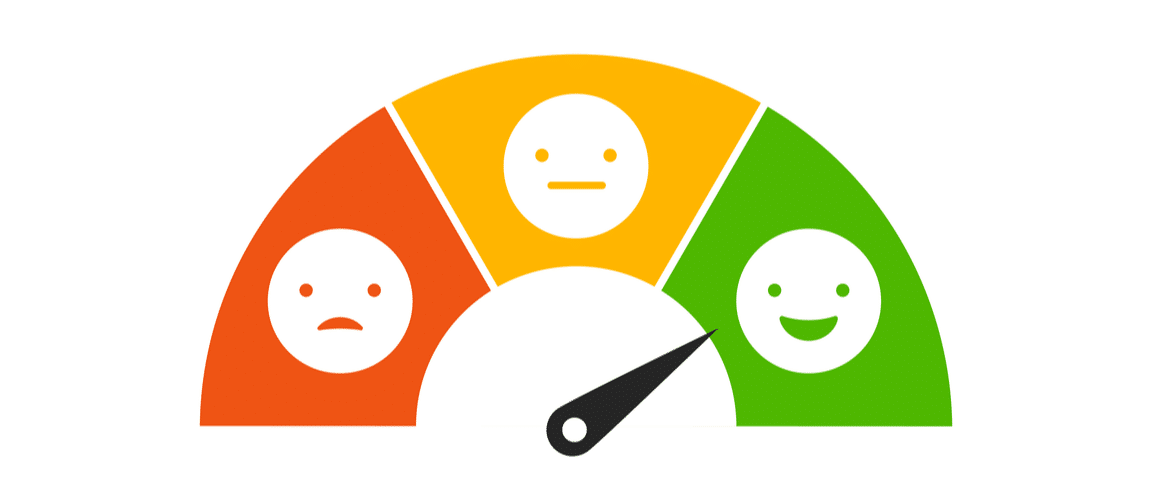Customer experience is one of the most important factors in the success of a business. This is because offering a good customer experience leads to increased customer loyalty, redacted churn, and an increase in profits.
In fact, research has shown that 86% of customers are willing to pay more for a better experience. That’s why there’s no time like the present to invest in your brand’s customer experience strategy.
Customer experience (also known as CX) requires a customer-oriented approach. In order to get customer experience right, you need to have a strategy that your entire organisation can get on board with.
While this can seem like a huge undertaking, the results speak for themselves: studies have shown that companies that invest in customer experience stand to see as much as a 70% increase in revenue within 36 months. Looking at it that way, it’s clear that customer experience is something you can’t afford not to invest in.
With this in mind, here are ten top tips to show you how your company can create a winning customer experience strategy for your customers. If you’re ready to uplevel your customer experience and reap the benefits of doing so, read on.
What is Customer Experience?
Customer experience (or CX) is your customers’ overall perception of their experience with your brand. It is informed by multiple factors and touchpoints, including your brand identity, its communication channels, ways of reaching and interacting with your brand, and the quality of the transaction a customer has with your brand.
All of these elements add up to the overall perception a customer will have of their entire experience with your brand.
In a nutshell, that is what we mean when we talk about the customer experience. It’s wide-ranging and encompasses many different aspects of a customers’ interaction with your brand.
Why is Customer Experience Important for Your Business?
CX is part of customer relationship management (CRM), which is a key part of fostering customer loyalty.
Most business owners already know that it is much easier to retain customers than it is to seek out and attract new ones. Data shows that 65% of a company’s business comes from loyal customers and loyal customers spend 67% more than new ones. These are just a few of the benefits of cultivating loyal customers.
If you want long-lasting customer relationships, and customers who will vouch for your brand to their friends and family, you must invest in their experience. The bottom line is that happy customers remain loyal.
What’s the Difference Between Customer Service and Customer Experience?
Many people mistakenly believe that customer service and customer experience are one and the same. Actually, this is untrue. They are related but are not the same thing.
Whereas customer service pertains to one particular touchpoint with a brand, customer experience is about the feelings and emotions a person experiences when interacting with a brand, as well as their entire purchase journey, from the first look to any post-purchase brand interactions.
The Definition of a Good Customer Experience

There is no single way to define good customer experience, because each customer’s experience is unique. That said, here’s what companies that are rated as having good customer experience have in common: they prioritise listening to customer feedback and act on it to make necessary changes to their service.
Sounds simple, doesn’t it? Well, there’s a lot of thought and strategy that goes into it behind the scenes, starting with gathering customer feedback. Forward-thinking businesses understand the power of feedback so they’re always soliciting it and making sure they use it to their advantage.
You can start by listening to your customers and their pain points. What is it that they want but aren’t getting? A great example of a company that did this early on and achieved great success doing so is Amazon. They noticed that people wanted products shipped quickly and that early delivery was something that always received good feedback from customers.
So, they decided to act on this feedback and take it even further by making early delivery the cornerstone of their offering. They built a supply chain and updated their internal operations to prioritise faster deliveries, further delighting their customers. In this way, Amazon was able to build loyalty amongst existing customers as well as winning new ones.
And notice that they did so by taking feedback around something they were already doing well and did that thing even better. It goes to show that building a better customer experience doesn’t necessarily always mean that you need to look for what you’re doing wrong! You can also look for what you’re already doing well and do it even better than anyone else in the market.
The Definition of a Bad Customer Experience
On the flip side of good customer experience, there are unfortunately some brands that fail to get customer experience right.
Broadly speaking, when a company isn’t performing well in terms of customer experience, it is because they aren’t listening to their customers nor taking their feedback on board to make improvements.
Examples of bad customer experience include long customer wait times, slow response times, poorly trained agents, not being active on channels where your customers need to reach you, the list goes on. All of these failures lead to unsatisfied customers.
The thing that these examples of bad customer experience all have in common is that they are the result of an overall operation that is sloppy and lacks strategy and cohesion. When a company fails to provide a good customer experience, it means they’re not paying attention to what their customers need and neglecting to deliver strategically against those needs.
Needless to say, customers find being on the receiving end of a poor customer experience frustrating. Many will voice their complaints whether the company asks for feedback or not. Unhappy customers will leave negative online reviews, post their poor experiences on social media and will tell friends and family about them.
In fact, an unhappy customer is 21% more likely to leave a review after a negative experience than a positive one. It’s no wonder that companies with a poor customer experience are inevitably devoured by competitors.
How to Measure and Analyse Customer Experience

In order to find out what your customers truly feel about their experience with your brand, the best approach is by actively soliciting their feedback.
You can:
- Email customers after their order has been completed to find out what they thought of the entire experience, from start to finish
- Include a feedback link on your website asking customers to rate their experience
- Ask for customer feedback following a customer service call
- Ask the customer to rate the helpfulness of their chat experience
In addition, you can also employ social listening tools that will compile what people are saying about their experience with your brand on social media. Such tools can provide useful reports that pull out helpful information like overall tone, common statements, regional opinions, etc.
Once you have all the feedback and social listening information compiled, you’ll want to analyse it in a way that it can be acted on. Preparing reports that can visually showcase the feedback in percentages, as well as highlighting specific customer quotes can be useful in problem solving meetings with teams.
Ultimately, you want the feedback you take on board to have actions set against it. For example, if one of the touchpoints your customers are complaining about is a recurring issue in the call centre, an output of this analysis would be to update your call centre procedures accordingly.
As we have discussed, customer experience is the result of overall experience with multiple touchpoints, so when analysing data, you want to look at every part of the customer journey to make improvements in multiple areas as necessary.
10 Tips to Create the Best Customer Experience Strategy
Now that you know why customer experience is important and what you need to do to analyse it for improvement, here are 10 tips you can employ to get started on improving your customer experience strategy straight away.
1. Understand Your Customers
Delivering the best possible customer experience for your customers starts with knowing who they are and what their specific needs and wants are.
One way to achieve this is through customer segmentation. You can define your customers by identifying key ‘types’ of customers and creating personas for each type.
For example, one customer persona could be ‘Rob’, who is a male between the ages of 18-35, loves sport and uses his mobile device frequently. Whereas another customer persona might be ‘Ruth’, a female aged 45-60, who is less tech savvy and relies on using the phone for customer support.
Identifying and creating such customer profiles can help your teams better understand your customers and how they can best support them. It helps your business become more customer centric.
2. Develop a Customer Experience Vision
To create and implement a great customer experience strategy, you need to have a clear mission and vision. More than just selling products, you should be thinking about your brand and what it stands for. This will determine how customers feel and relate to your brand.
In this step, you can find your brand voice and persona and develop it across all touch points. Is your brand irreverent and whimsical? Or is it more traditional and rooted in heritage? This will inform how your brand approaches the customer experience and makes a name for itself in the industry.
Your customer experience is built on brand – the two are intertwined. Once you’ve identified your brand persona, then you can communicate your customer experience vision clearly to your audiences, so that they can know what to expect from your brand.
3. Connect With Your customers and Reward Loyalty
Everyone wants to feel important, and your customers are no different! They’ve chosen to spend money with your brand, so it’s important to roll out the red carpet to create a positive customer experience. You want your customer to know that you care for them.
One of the best ways you can do this is by rewarding loyal customers. You can do so by offering discounts, rewards, or special offers to existing customers, which makes them feel valued and entices them to come back to you again and again.
4. Continue to Solicit Customer Feedback and Act on it!
As mentioned above, the brands that offer superior customer experience are those who listen to their customers and act upon the information they take in.
So, we really cannot underestimate the importance of customer feedback. So much so that we’re including it here again to point out that customer feedback should never be finite.
Don’t just ask for feedback when things are going wrong; asking for feedback should be a continuous practice. There’s always room for improvement and continuous improvement and innovation is how top brands stay on top.
5. Follow What They’re Saying About Your Brand Online
Whether you like it or not, customers are always talking about your brand online. This can be helpful both in identifying issues and problems, but also to see what’s going well and what people love about your brand, so that you can do more of it.
By implementing social listening tools and taking the time to analyse the reports that come out of them, your teams can become better informed about customer sentiment so that they can act on it accordingly to adjust the service and experiences offered.
6. Build Customer Trust
Trust is one of the most important bonds you can have with your customer base. In order to build lasting relationships with your customers, they need to know that they can rely on your brand.
This takes many forms and there’s no one ‘quick fix’ for building trust, it’s the sum of many actions you take as a business. Trust starts with offering a product or service that is well-developed and safe. But it doesn’t end there. Trust means being honest with your customers, even when things go wrong.
For example, rather than trying to hide problems, the companies that face up to them and work to correct them and make things right are the ones that are more likely to win their customers’ trust moving forward.
7. Streamline Your Processes
Processes can make or break your business. For instance, if your checkout process is slow and clunky, you may lose customers. But processes are numerous — they range from signing up to a mailing list, to receiving customer service, to ordering products. These are all customer experience processes that must be managed to ensure that they are as smooth and user-friendly as possible.
By streamlining processes such as your checkout system, search functionality; and automated emails throughout the order process, you create an overall experience that is easy and enjoyable for each customer.
Streamlined systems will absolutely help in preventing abandoned shopping trollies and alienated customers.
8. Develop Your Team
Once you have hired a crack team that aligns with your company’s goals and vision, it’s important to continually invest in your team to develop their skills and keep them motivated.
Your processes may change, and when they do, you must make sure your team adapts and understands the new system as well as updated customer experience strategies.
They should not only have the day-to-day technical skills required to do the job, but should also understand the broader strategic vision, and how their role fits into it.
9. Study the Competition
While you never want to copy other brands, it’s important to know what the competition is up to, to ensure that you’re not missing a trick. There’s also a lot to be gained from learning from how successful brands, such as Apple, have approached customer experience in the past.
By doing your homework and staying on top of your industry and the actions of competitors, you make sure that your brand always meets, and exceeds, the industry standard for customer experience.
10. Measure, Measure, Measure
Once you have implemented new processes and procedures to improve your customer experience strategy, you need to continue to track your progress to ensure that your changes are successful.
You can use various forms of measurement to do so, including analytics, customer feedback, and social listening. This should give you an idea as to whether your improvements are working, and whether there are areas that still need further tweaking.
Final Thoughts
Today’s customers are digitally connected and have high expectations from brands. It’s not enough to stay complacent – brands must constantly innovate in order to attract and maintain satisfied customers. Offering customers an excellent experience is a key way of achieving that.
When you focus on your customer experience strategy, you’re making an investment in your brand. Improving customer experience will pay off in the form of customer loyalty, positive feedback, and increased revenue.
eDesk’s eCommerce helpdesk software can help your online business deliver a great customer experience by resolving issues faster. Book a demo to learn more or start a free 14-day trial today (no credit card needed).






